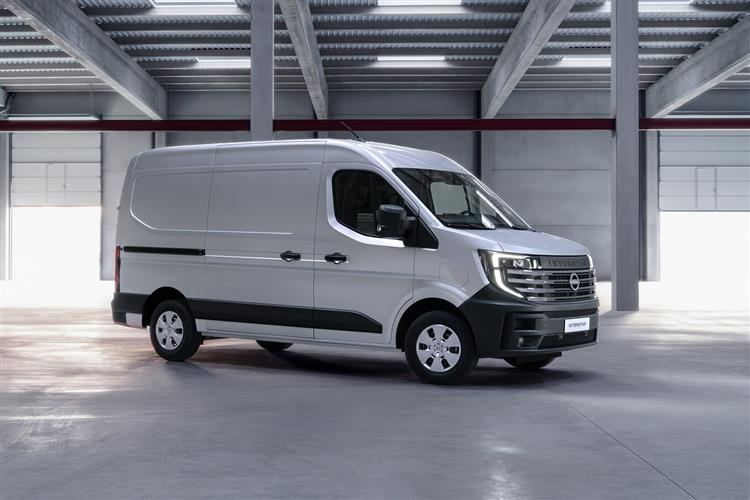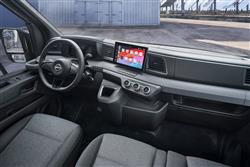INTER STELLAR? (some text hidden) --NONE--
By Jonathan Crouch
The Interstar, Nissan's biggest van, now has bigger ideas. Jonathan Crouch takes a look.
Ten Second Reviewword count: 47
Nissan re-invents its largest van, the Interstar, for a new era. It now has a sharper look, a totally redesigned cabin and a completely new level of media connectivity and drive assist features. The diesel engines are more familiar, but they're now joined by a full-EV version.
Backgroundword count: 152
You might be forgiven for not even knowing that Nissan made a really large van. Partly because the last generation version of the model it sold couldn't decide over its lifetime whether it wanted to be called 'NV400' or 'Interstar'. It's 'Interstar' now and, like all other Nissan LCVs, is Renault-based, in this case created around the engineering of the fourth generation Renault Master. Which means it's a cutting-edge commercial product based around a platform that can accommodate three power sources - diesel, electric and hydrogen. Whatever your choice of variant, Nissan claims it will be able to go further, carry more and cost less than its predecessor. Well, cost less to run anyway. The Japanese brand reckons it's 'the ultimate ally for essential businesses that keep society running', but every large LCV in the segment claims to be that. Why might your company want this one? Let's take a closer look.
Driving Experienceword count: 290
This new-era Interstar's diesel engine options are basically carried over from the previous model. So you get the brand's usual diesel Blue dCi unit, available with 105, 130 or 170hp. It's bolted though, to a completely new 'Multi-Energy' platform that's also been engineered for two other kinds of drivetrain. One of these - a hydrogen engine and fuel cell set-up - won't be seen until later in this LCV's production run. The other though, the full-EV powerplant used in the Interstar-e, is available right now. This uses a 105kW motor delivering 300Nm of torque and energised by an 87kWh battery capable of taking Nissan's first large segment EV van up to 286 miles between charges. There's additionally a smaller-battery 40kWh version with a range of 124 miles. Nissan's also worked hard on a novel new power-assisted 'one-box' dynamic braking control system that keeps braking effectiveness and pedal feel the same, regardless of how much weight the van is carrying. It also triggers the automatic emergency braking system sooner (response time has been halved over the old model) and enhances regeneration, extending the range of the electric versions. And, as you'd expect from an all-new design, the portfolio of camera and radar driver assistance and safety features has been widened. An improved array of Advanced Driver Assistance technologies is included as standard, such as Lane Keep Assist and Lane Departure Warning, Intelligent Speed Assistance, Intelligent Emergency Braking with cyclist and pedestrian detection and Side Wind Assist. The shorter wheelbase and redesigned front axle provide for extra manoeuvrability, including a 1.5-metre-shorter turning diameter. Customers can choose an L3 version for the city driving (L2 is the base vehicle, L3 is available with front wheel and rear-wheel drive and L4 has rear-wheel drive).
To see the full road test text contact us on 0330 0020 227
Pictures (high res disabled)

.jpg)
|
.jpg)
|
.jpg)
| |||
.jpg)
|
.jpg)
|
.jpg)
| |||
.jpg)
|
.jpg)
|
.jpg)
| |||

|
Statistics (subset of data only)
Min |
Max |
|
Load Volume (l): |
11 |
22 |
Payload Capacity (l): |
1625 |
|
Scoring (subset of scores)
Category: Vans
| Performance | |
| Handling | |
| Comfort | |
| Space | |
| Styling, Build, Value, Equipment, Depreciation, Handling, Insurance and Total scores are available with our full data feed. | |



